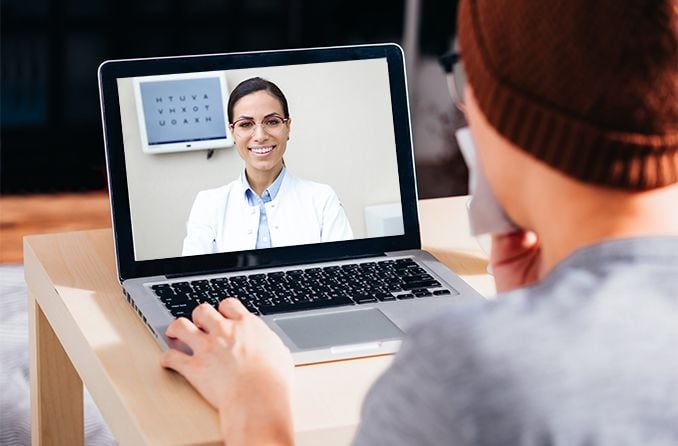
Coronavirus and Vision
All About Vision's guide to coronavirus and your eyes includes articles on symptoms and safety measures, how COVID-19 has eye doctors switching to virtual visits how you can protect your eyes, look good online and even entertain your children while stuck at home.

Find out how you can keep your glasses from fogging up while you wear a mask — and why your glasses get foggy in the first place.

How to tell when red eyes could be a symptom of COVID-19 — or when they’re probably caused by something else.

COVID can cause eye problems that lead to blurry vision and other eye symptoms. Watch for these signs and know when to get medical help.

Considering COVID goggles? Learn why and how to protect your eyes during the coronavirus pandemic.

Learn about COVID-19 transmission and how the novel coronavirus may be able to enter through your eyes.

In some cases, the COVID-19 coronavirus can produce eye symptoms. Learn how to tell whether these symptoms are from COVID-19 or just allergies.

Learn why some experts say that COVID-19 Omicron XBB.1.16 (Arcturus) variant may increase the risk of conjunctivitis, causing red, itchy eyes.

Find out how some optometrists and ophthalmologists are switching to virtual eye exams to limit the spread of COVID-19.

Doctors are still learning about COVID-19 and its effects on the body, and many are on the lookout for eye problems that could be related to the virus.

Face masks can fog glasses, but did you know they may also cause eye issues like dry eye? Learn how to prevent common eye problems caused by mask wearing.

Find out how the COVID-19 delta and omicron variants may affect your eyes, and how the eyes could play a key role in the fight against long COVID.

Ivermectin is being used as a controversial treatment for COVID-19, but it may lead to problems with the eyes, vision and other parts of the body.

Can COVID-19, a cold or flu cause pink eye? Learn how coronavirus could lead to conjunctivitis and know the symptoms, treatments, and how to cut your risk.

No evidence has surfaced of any widespread vision-related side effects from the COVID-19 vaccines.

Without also wearing a face mask, a face shield does very little to protect you from contagious COVID-19 respiratory droplets.
All About Vision and AllAboutVision.com are registered trademarks of AAV Media, LLC. © 2000-2025 AAV Media, LLC. The content on this site is for informational purposes only. All About Vision does not provide medical advice, diagnosis or treatment. Contact an eye doctor if you need medical attention.